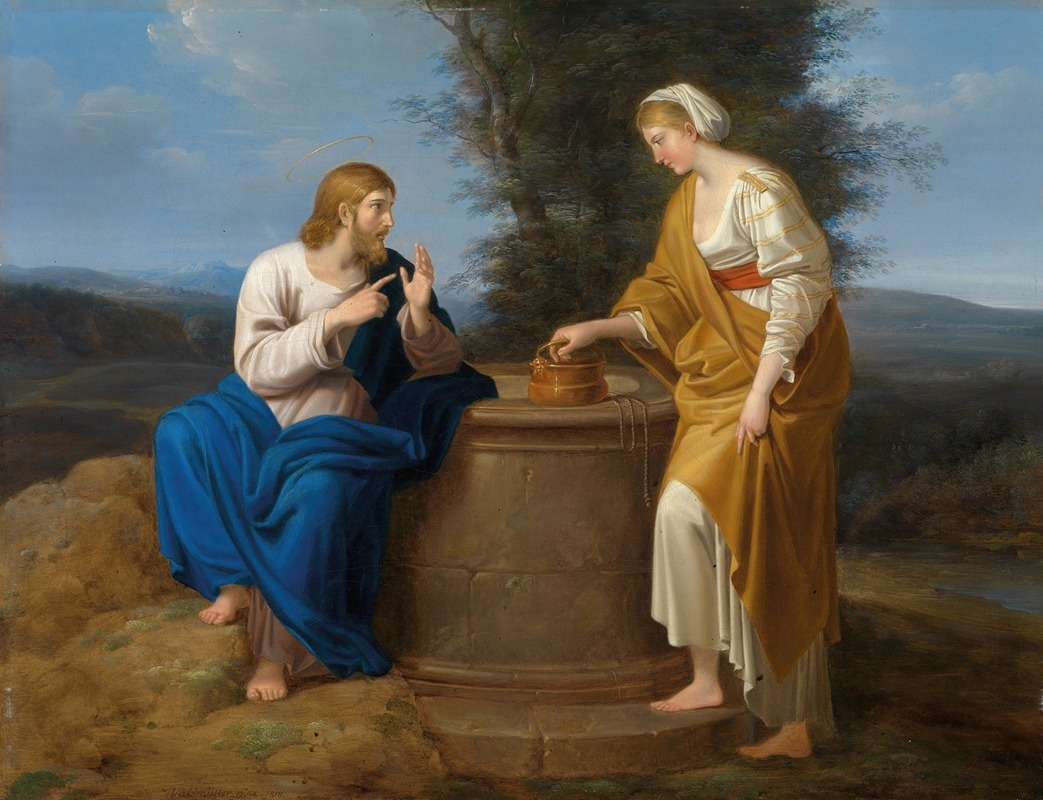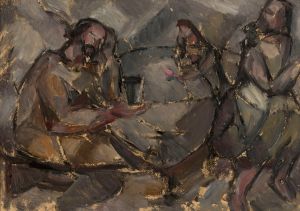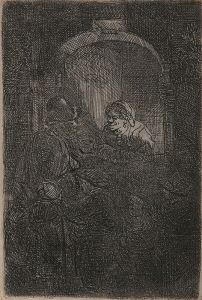
Christ And The Samaritan Woman
A hand-painted replica of Ferdinand Georg Waldmüller’s masterpiece Christ And The Samaritan Woman, meticulously crafted by professional artists to capture the true essence of the original. Each piece is created with museum-quality canvas and rare mineral pigments, carefully painted by experienced artists with delicate brushstrokes and rich, layered colors to perfectly recreate the texture of the original artwork. Unlike machine-printed reproductions, this hand-painted version brings the painting to life, infused with the artist’s emotions and skill in every stroke. Whether for personal collection or home decoration, it instantly elevates the artistic atmosphere of any space.
Ferdinand Georg Waldmüller (1793–1865) was an Austrian painter renowned for his contributions to the Biedermeier period, a style characterized by its focus on realism and detailed depictions of everyday life and nature. Among his extensive body of work, Waldmüller also created religious-themed paintings, one of which is titled Christ and the Samaritan Woman.
This painting depicts the biblical encounter between Jesus Christ and the Samaritan woman at Jacob's well, as described in the Gospel of John, Chapter 4. In this narrative, Jesus speaks with a Samaritan woman, breaking social and cultural norms of the time, and offers her "living water," symbolizing eternal life and spiritual salvation. The story is significant in Christian theology for its themes of inclusivity, redemption, and the breaking of barriers between different communities.
Waldmüller’s interpretation of this scene reflects his mastery of realism and attention to detail. The composition likely emphasizes the human interaction between Christ and the Samaritan woman, capturing the emotional and spiritual depth of the moment. Waldmüller was known for his ability to render textures, light, and expressions with precision, which would have contributed to the painting's impact.
While Waldmüller is better known for his landscapes and genre scenes, his religious works, including Christ and the Samaritan Woman, demonstrate his versatility as an artist and his engagement with themes of faith and morality. The painting is an example of how 19th-century European artists approached biblical subjects with a focus on realism and accessibility, making the stories relatable to contemporary audiences.
Further details about the painting, such as its current location, date of creation, or specific stylistic elements, are not widely documented in available sources. Waldmüller’s works are held in various collections, including museums and private holdings, but the precise whereabouts of Christ and the Samaritan Woman remain unclear.
As with many of Waldmüller’s religious paintings, this work reflects the broader cultural and artistic trends of the Biedermeier period, blending technical skill with an emphasis on moral and spiritual themes.


















